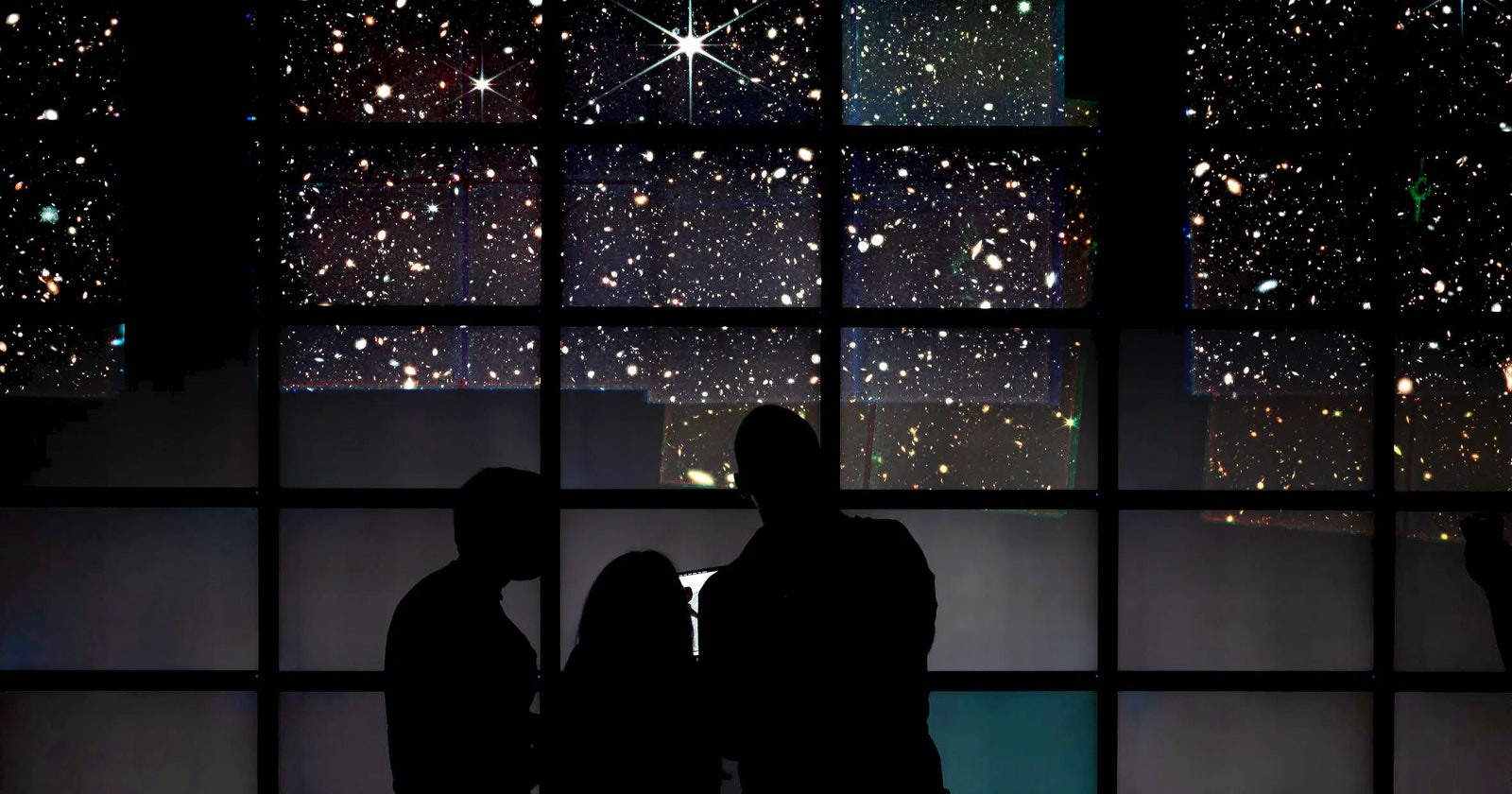The cracks in cosmology were supposed to take a while to appear. But when the James Webb Space Telescope (JWST) opened its lens last spring, extremely distant yet very bright galaxies immediately shone into the telescope’s field of view. “They were just so stupidly bright, and they just stood out,” said Rohan Naidu, an astronomer at the Massachusetts Institute of Technology.
The galaxies’ apparent distances from Earth suggested that they formed much earlier in the history of the universe than anyone anticipated. (The farther away something is, the longer ago its light flared forth.) Doubts swirled, but in December, astronomers confirmed that some of the galaxies are indeed as distant, and therefore as primordial, as they seem. The earliest of those confirmed galaxies shed its light 330 million years after the Big Bang, making it the new record holder for the earliest known structure in the universe. That galaxy was rather dim, but other candidates loosely pegged to the same time period were already shining bright, meaning they were potentially humongous.
How could stars ignite inside superheated clouds of gas so soon after the Big Bang? How could they hastily weave themselves into such huge gravitationally bound structures? Finding such big, bright, early galaxies seems akin to finding a fossilized rabbit in Precambrian strata. “There are no big things at early times. It takes a while to get to big things,” said Mike Boylan-Kolchin, a theoretical physicist at the University of Texas, Austin.
Astronomers began asking whether the profusion of early big things defies the current understanding of the cosmos. Some researchers and media outlets claimed that the telescope’s observations were breaking the standard model of cosmology—a well-tested set of equations called the lambda cold dark matter, or ΛCDM, model—thrillingly pointing to new cosmic ingredients or governing laws. It has since become clear, however, that the ΛCDM model is resilient. Instead of forcing researchers to rewrite the rules of cosmology, the JWST findings have astronomers rethinking how galaxies are made, especially in the cosmic beginning. The telescope has not yet broken cosmology, but that doesn’t mean the case of the too-early galaxies will turn out to be anything but epochal.
Simpler Times
To see why the detection of very early, bright galaxies is surprising, it helps to understand what cosmologists know—or think they know—about the universe.
After the Big Bang, the infant universe began cooling off. Within a few million years, the roiling plasma that filled space settled down, and electrons, protons, and neutrons combined into atoms, mostly neutral hydrogen. Things were quiet and dark for a period of uncertain duration known as the cosmic dark ages. Then something happened.
Most of the material that flew apart after the Big Bang is made of something we can’t see, called dark matter. It has exerted a powerful influence over the cosmos, especially at first. In the standard picture, cold dark matter (a term that means invisible, slow-moving particles) was flung about the cosmos indiscriminately. In some areas its distribution was denser, and in these regions it began collapsing into clumps. Visible matter, meaning atoms, clustered around the clumps of dark matter. As the atoms cooled off as well, they eventually condensed, and the first stars were born. These new sources of radiation recharged the neutral hydrogen that filled the universe during the so-called epoch of reionization. Through gravity, larger and more complex structures grew, building a vast cosmic web of galaxies.



